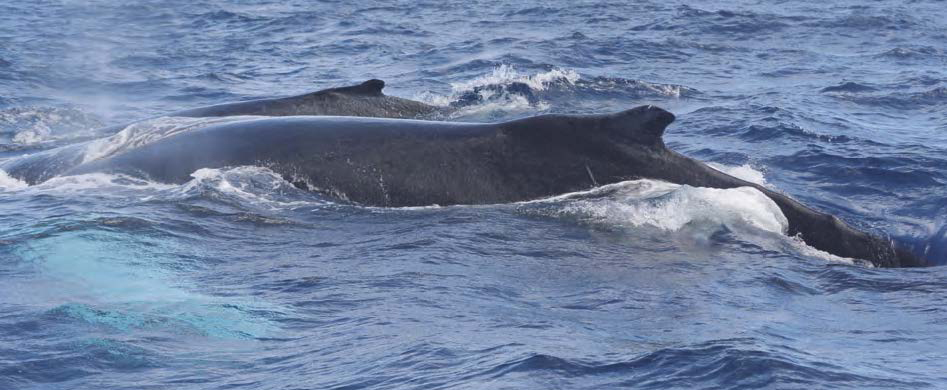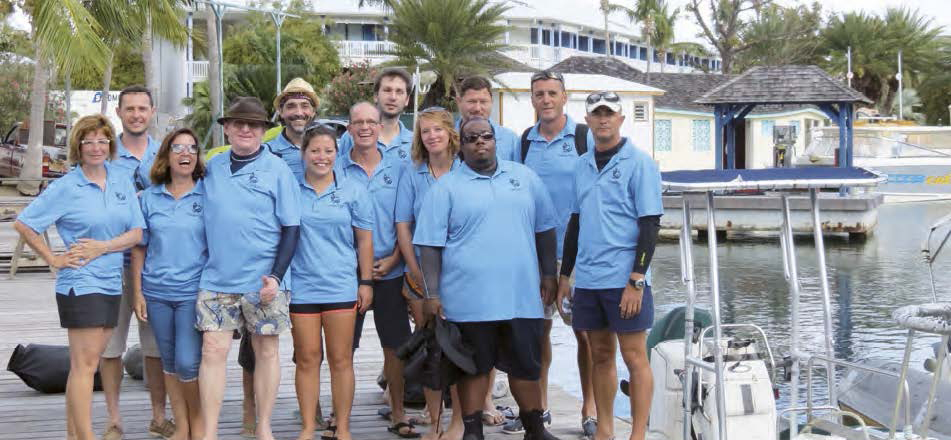After having initiated the first Megara mission to study humpback whales in the waters around Saint Martin and neighboring islands in March 2014, the Réserve Naturelle launched Megara 2015 on March 23, 2015, for 12 days dedicated to the observation and research of humpback whales. This study of marine mammals instituted by the Réserve, and more specifically the Megara missions in the Northern Islands, has proved that humpback whales are not simply migrating past our islands. The songs of the males, the observation of groups of males following females, and the presence of females with their babies just a few days old, indicate that this marine zone could also be an area for reproduction as well as a nursery for these large mammals. The best surprise during this expedition was the diversity and large number of songs by male whales that were recorded by the Megara crew, as the best singers try to win the hearts of those females with which they want to mate. «Every year, the songs are new, and this season they are relatively different from those that we recorded in 2014,» remarks Julien Chalifour, director of the scientific division of the Réserve. «If they come from the same place, the whales will adopt the same style of songs, and the songs apparently evolve as different groups come together,” he continues, noting that among the humpback whales, the male that is number one on the hit parade has the best chances at reproduction. The 15 participants in Megara 2015, in addition to the Réserve staff, included Michel Vély, a marine mammal specialist who is the president of the association, Megaptera, which develops various programs about the study, awareness, and conservation of marine mammals. Also included were two photographers, as well as Olivier Halin, a videographer and drone pilot, who also shot some great aerial images of large dolphins close to the shores of Tintamare. Next comes the sorting out the images, and especially examining those that show the tail fins of humpback whales, whose characteristics signify the individual identity of each mammal. The photos will be entered in the catalogue created last year by the Réserve and shared with other existing catalogues from the Caribbean, as well as the United States, Canada, Iceland, and Norway. The Réserve has promised that the public will soon be able to see the videos, as well as other beautiful images taken during the 2014 and 2015 Megara campaigns. At the same time, three samples of skin were taken to determine the sex and origin of each whale, as well as their nutritional regime, and any eventual chemical pollutants that might have gotten into their bodies. These biopsies will be analyzed by Dr. Per J. Palsboll at The University of Groningen in The Netherlands, and compared to a database of thousands of samples taken from animals in the northern Atlantic. This will determine the zones in the Atlantic frequented by these large marine mammals.
Megara 2015: a 12-day study of humpback whales
L’équipe de Megara The Megara Team
As described in its management plan, the Réserve Naturelle, which works in close collaboration with the Agency for Protected Marine Zones and the AGOA sanctuary, has taken on the mission of deepening its knowledge of marine mammals that frequent the waters of the Northern Islands. The goal of this mission is to establish, under the aegis of the AGOA sanctuary, management objectives best adapted to the conservation of these emblematic species. If you would like to participate, the Réserve invites you to send your photos of tail fins or dorsal fins via email to baleine@rnsm.org

Nageoire caudale A tail fin

















